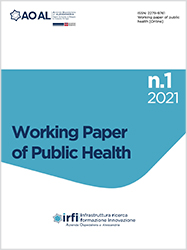Sindrome post-Covid-19: sintomi e follow-up stratificato. Una revisione sistematica e una meta-analisi

All claims expressed in this article are solely those of the authors and do not necessarily represent those of their affiliated organizations, or those of the publisher, the editors and the reviewers. Any product that may be evaluated in this article or claim that may be made by its manufacturer is not guaranteed or endorsed by the publisher.
Autori
Background: La sindrome post-COVID-19 è stata riscontrata in pazienti ricoverati in ospedale con gravi condizioni di COVID-19 e in adulti che inizialmente presentavano una malattia lieve. L'obiettivo è sottolineare la letteratura disponibile sul follow-up post-COVID-19 fino a 12 mesi sui sintomi riportati dagli adulti infetti da Sars-Cov-2 da almeno 12 settimane dopo l'insorgenza della malattia. Metodi: La ricerca bibliografica è stata condotta su PubMed, Embase, CINHAL, Scopus e il Cochrane Central Register of Controlled Studies. Risultati: L'analisi ha rilevato che il 68% dei pazienti presentava almeno un sintomo post-COVID-19 dopo 12 settimane e fino a 24 settimane dopo l'esordio. I sintomi più frequenti sono stati affaticamento e debolezza muscolare (26%), vertigini e annebbiamento mentale (15%) e disturbi del gusto (10%). Conclusioni: la politica sanitaria deve prepararsi a un piano di gestione a lungo termine per affrontare la COVID-19 in quanto vi sono esigenze significative oltre la ripresa dall'infezione acuta.
Agenzie di supporto
NoneCome citare

Questo volume è pubblicato con la licenza Creative Commons Attribuzione - Non commerciale 4.0 Internazionale.






